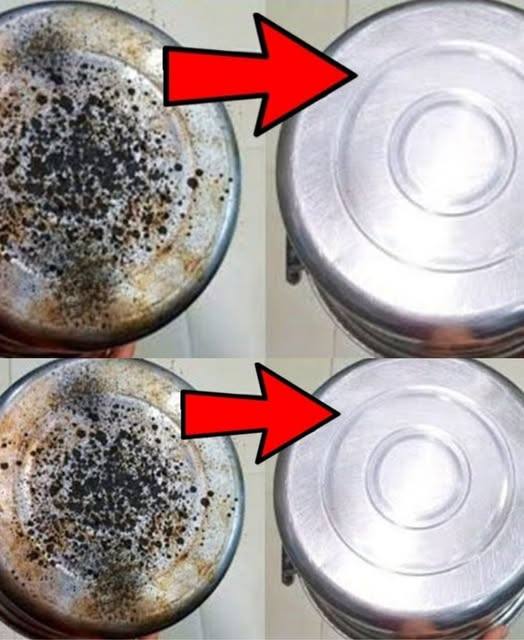ADVERTISEMENT
Instructions:
- Add Vinegar: Pour 1 cup of white vinegar into the burnt pot or pan. Ensure that the vinegar covers the burnt areas or fill the pan enough to submerge the affected surface.
- Sprinkle Sugar: Sprinkle about 1 tablespoon of sugar over the vinegar. Stir the mixture to help dissolve the sugar into the vinegar, ensuring an even coat.
- Heat the Solution: Place the pot on the stove and bring the mixture to a gentle simmer. Let it simmer for about 5-10 minutes. The heat helps to loosen the burnt bits and activate the cleaning power of the vinegar and sugar.
- Scrub the Surface: After simmering, turn off the heat and let the pot cool down slightly. Use a non-abrasive scrub brush or sponge to scrub the bottom of the pot. You should notice the burnt stains coming off much easier.
- Rinse and Repeat (if necessary): Once the pot is clean, rinse it thoroughly with warm water. If there are still some stubborn stains, repeat the process for a deeper clean. You can also add a little extra sugar for tougher spots and try scrubbing again.
Tips:
- Use a Scrubber with Caution: Be careful not to use steel wool or other harsh scrubbing tools, especially on non-stick or delicate surfaces, as they can scratch and damage the finish.
- Add Baking Soda for Extra Power: If vinegar and sugar alone don’t fully remove the stains, try adding a small amount of baking soda to the mixture. The combination of vinegar, sugar, and baking soda creates an extra-fizzing reaction that can lift tough burnt food stains.
- Let It Sit: If the burnt residue is particularly stubborn, after simmering the vinegar and sugar, let the pot sit for 15-30 minutes before scrubbing. This extra soak time can help break down the stains even further.
Why It Works
Vinegar’s acidic nature is key to dissolving carbonized food and grease, while the sugar’s gritty texture acts as a mild abrasive, helping to scrub off tough stains without damaging your cookware. Additionally, simmering the mixture allows it to penetrate deeper into the burnt areas, loosening the food particles and making them easier to remove.
This method works on a variety of pots and pans, including stainless steel, cast iron, and enamel-coated cookware. However, if you’re dealing with a delicate non-stick surface, use caution and stick to a softer sponge to avoid scratching the coating.
Benefits of Using Vinegar and Sugar to Clean Burnt Pots
- Non-toxic: Unlike chemical cleaners, vinegar and sugar are both non-toxic and safe for you and the environment. They’re perfect for those who want to avoid harsh chemicals in their home.
- Cost-effective: Vinegar and sugar are affordable pantry staples that you likely already have on hand. No need to spend extra money on specialty cleaning products!
- Gentle yet effective: The vinegar and sugar combination is tough on stains but gentle on your cookware, ensuring that your pots and pans remain in great condition for years to come.
- Eco-friendly: Using natural ingredients instead of chemicals is a better option for both your health and the environment. Vinegar and sugar are biodegradable and won’t harm aquatic life if they enter the water supply.
Conclusion
Cleaning burnt pots and pans doesn’t have to be a daunting task. By combining two simple, natural ingredients—vinegar and sugar—you can tackle stubborn stains and burnt food without the need for harsh chemicals or expensive cleaning products. This quick, eco-friendly solution is not only effective but also gentle on your cookware and the environment. Give it a try next time you’re faced with a burnt pot, and you’ll be amazed at how easy it is to restore your cookware to its former shine!
